You may have tried a few different kinds of tequila before. Still, most people who don’t pay enough attention may not notice any variation between the ones they had, especially if it mixed with their favorite citrusy cocktails.
We don’t blame them because while tequila’s popularity has soared in America, it’s still an exotic liquor. Besides, there aren’t that many different types of tequila to begin with.

But if you want to learn more about those variants, what sets them apart, their flavor profiles and aromas, and some of the nicest tequila cocktails to make with them, you’ll find it all in this post. Let’s get to it!
History of Tequila
In the mid-18th century, tequila started as an offshoot of mezcal, an older type of liquor made from agave plants that the native people in pre-Columbian Mexico enjoyed. The distinction is that mezcal can be made from any agave plant, but tequila is strictly a blue Weber agave spirit.
It took over a century for tequila to migrate from Mexico to the American market, specifically around the late 19th century. Initially, it didn’t make a loud bang, but it became popular around World War 2 when other liquors became difficult to import from Europe.
The name comes from the town of Tequila in the Mexican state of Jalisco, which is primarily where tequila production happens today.
Different Types of Tequila
- Blanco Tequila
- Reposado
- Tequila Añejo
- Extra Añejo Tequila
- Joven
- Cristalino
1. Blanco Tequila
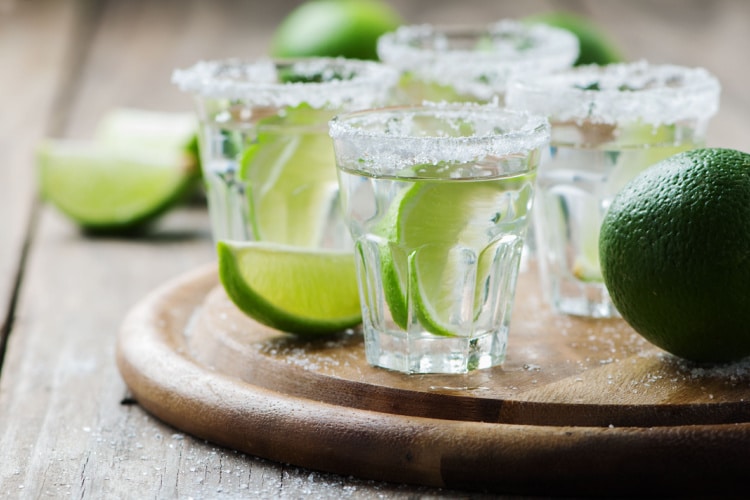
A blanco tequila (white tequila), also known as plata tequila (silver tequila) or unaged tequila, is a clear-colored and blue-agave biased in terms of flavor, mainly due to the little to no aging that it goes through.
Unaged blanco tequila is popular for its unique flavor and quick production (as tequila distillers can sell it immediately after distillation), but some prefer to age it for up to two months. If they do that, the aging mostly happens in stainless steel or neutral oak barrels, which allows it to retain its clear color and avoid absorbing any notes from the oakwood.
Because blanco tequilas retain most of the dominant characteristics of the blue agave plant, you can expect the flavor to reflect this. After the first sip, and once you get over the bitter punch if you’re unaccustomed to it, you’ll notice your drink has a complex flavor combination of citrus, herbs, and spice.
There’s also a subtle sweetness, but you’re more likely to enjoy it if you’re more used to drinking blanco tequila, which tends to be an acquired taste for many people.
Overall, the blanco tequila offers a smooth taste with a satisfying aroma. It may be challenging to pick up for the unseasoned drinker, but we’d recommend you try it regardless, as it’s the purest way to enjoy blue agave spirits.
You also don’t need to drink it neat. In fact, many people prefer blanco tequila in citrusy mixed drinks, such as with lime juice.
Suggested Cocktails
- Classic Margarita
- Paloma
- Rosita
- Mexican Mule
- Siesta
- Cantarito
- El Diablo
2. Reposado
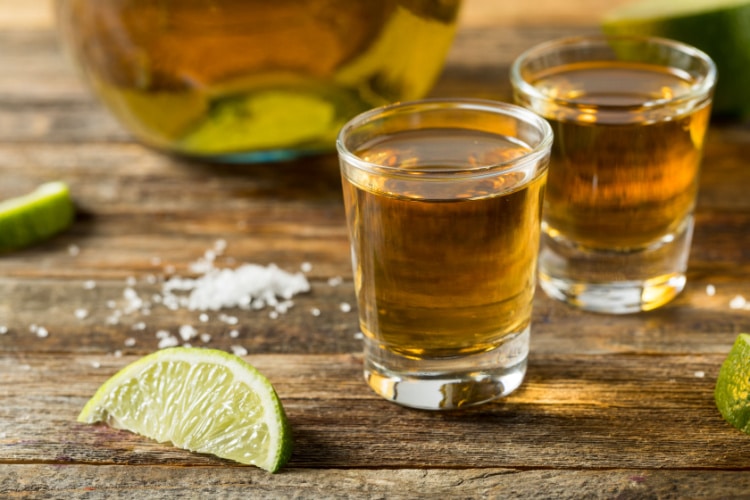
Reposado tequila is the next step up in the aging process after silver tequila. Once you pass the two-month aging mark, your blanco tequilas turn into reposado tequilas.
After distillation, reposado tequilas are “rested” in steel or oak barrels for two months and a year. The choice of the barrel is left to the distillers, but many opt for American white oak barrels or whiskey barrels to allow the reposado tequila to absorb notes from those other drinks.
Although reposado tequila is barrel-aged, it doesn’t rest for enough time to fully mature and absorb properties from the oak barrel in favor of the blue agave. However, it stays just enough to form a light straw or golden color.
This also allows the reposado tequila to develop warmer, complex flavors of oak, vanilla, a subtle touch of caramel, noticeable notes of oakwood, and some herbal notes as this type of tequila retains much of the blue agave character. You can also expect a toasty or honey-inspired finish, but this depends on the barrels your tequila was aged in.
Reposado may be enjoyed straight, but it’s also a nice aged tequila to drink in a cocktail, as it offers a nice balance in flavor and bite between the other main types of tequila.
Suggested Cocktails
- Spicy Margarita
- Reposado Old Fashioned
- Tequila Sour
- Aperol and Elderflower Margarita
- Passionate Tequila Sunrise
3. Tequila Añejo
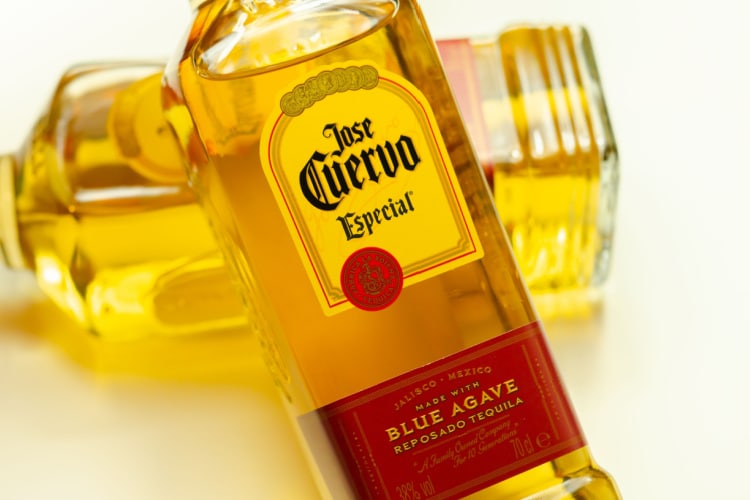
Once tequila aging passes the one-year mark, we have the first type of añejo tequilas (aged tequilas), which is the standard añejo.
Tequila añejo may be aged up to three years, typically in French oak barrels. However, American oak barrels that were used for aged whiskey are also standard, just like with reposado tequila.
The maturation time and the barrel sizes allow this aged tequila to absorb much more of the distinct characteristics of the oak, which shows in the flavor and aroma of the final product. However, you’ll get different results depending on the type of barrel, what it was used for, whether or not there were any additives, and how long the tequila añejo was aged.
Generally, aged tequila has a dark caramel color with an interesting flavor profile with notes of caramel, vanilla, butterscotch, toasted almonds, honey, and brown sugar.
But how do you drink tequila añejo?
Many tequila enthusiasts enjoy aged tequila directly on the rocks, as it’s a fairly similar experience to other brown spirits like bourbon. However, you can also enjoy it in some cocktails.
Suggested Cocktails
- Añejo Tequila Old Fashioned
- Añejo Sidecar
- Añejo Soda
- Añejo Manhattan
4. Extra Añejo Tequila

The ultra-aged tequila you can enjoy is the extra añejo. It’s a relatively new type, having just come out in the 21st century.
Aged tequilas count as extra añejo once they pass the three-year mark in the oak barrel. Again, these barrels can be made of American or French oak to allow the liquor to soak up some external enriching properties of oak and whiskey.
As the tequila ages, it absorbs the varying flavors and builds a complex profile that explodes and diffuses quickly around the table. The color also reflects the age, as it’s noticeably darker than traditional aged tequilas.
Note that the extra añejo is the most premium of the four tequila types we’ve shown so far, but you’d likely notice that anyway in its price. This is not surprising considering how long distillers have to keep their extra aged tequila in the barrels before they sell them.
For these reasons, we wouldn’t recommend using the extra añejo in a regular cocktail. In fact, most people would raise an eyebrow if you don’t drink it on the rocks, as that’s the best way to enjoy the complexity of the extra añejo’s flavor profile. However, no one will hold you back from enjoying it in a cocktail if that’s your thing.
Suggested Cocktails
- The Oldest Fashioned (aka Extra Añejo Old Fashioned)
5. Joven
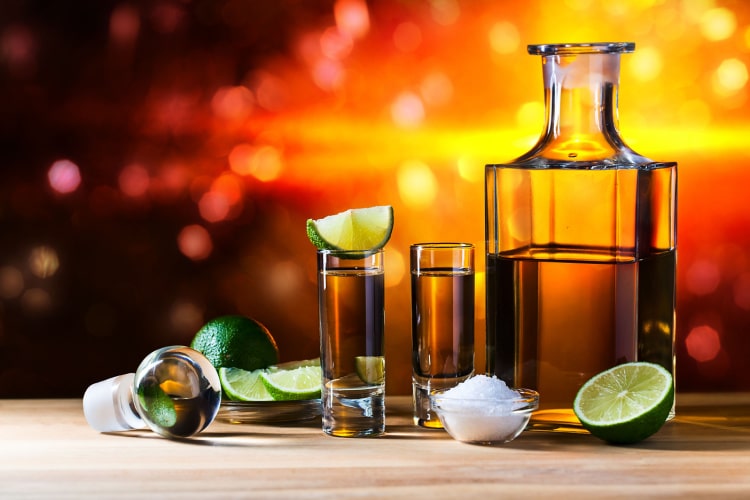
Tequila joven (meaning “young”), commonly known as gold tequila, is a spin-off type of blanco tequila that involves the same production process (i.e., little to no aging) but with some additives.
The most notable additive is caramel coloring, which gives gold tequilas their distinct color and subtle flavor while retaining other properties of the white tequila. Other flavorings may be added, such as oak extract, grain alcohols, or glycerin.
The result is an exciting and hybrid flavor profile with a similar intensity and first bite to that of blanco tequilas but with notes of other ingredients that almost make it feel like you’re drinking scotch whiskey.
Suggested Cocktails
- The Wolf Run
- High-Brow Highball
- Blue Jam Blues
6. Cristalino
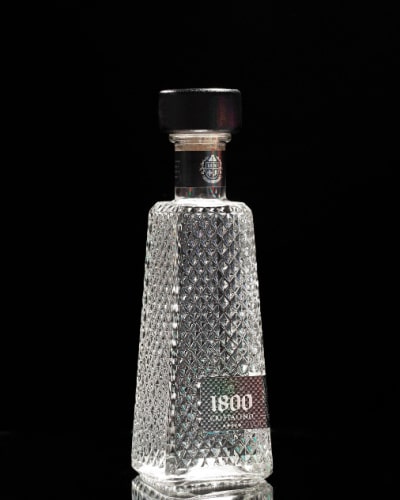
Last but not least, we have another fairly modern and premium spin-off type of tequila: the cristalino tequila.
The easiest way to explain this type is by understanding the relationship between blanco and joven tequilas and applying the opposite logic to añejo tequilas and cristalinos.
In other words, cristalino tequilas are regular or extra añejos filtered with charcoal to remove some of the effects of oak barrel aging and allow the original fruity notes of unaged tequilas to reemerge.
This results in a flavor profile that’s so complex it’s hard to describe in words. To be clear, the effects of aging don’t disappear, as you can still feel the woody and caramel notes, but it has a novel bite to it that’s similar to silver tequilas.
Suggested Cocktails
- 1800 Cristalino Cadillac Margarita
- Cristalino Old Fashioned
- 1800 Cristalino Paloma
Conclusion
Although there are only four main types of tequila (plus two spin-offs), each has unique characteristics that primarily affect its flavor profile, aroma, and overall drinking experience.
In general, the more you age a tequila, the deeper its flavor grows as it absorbs notes from the aging barrel and matures its ingredients. This makes it easier to enjoy on the rocks.
The opposite is also true; the less aged a tequila is, the stronger its bite and the more likely it is to be used in cocktails.